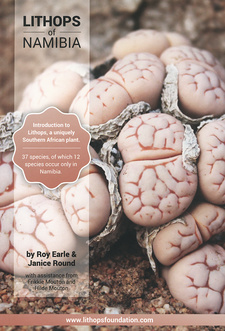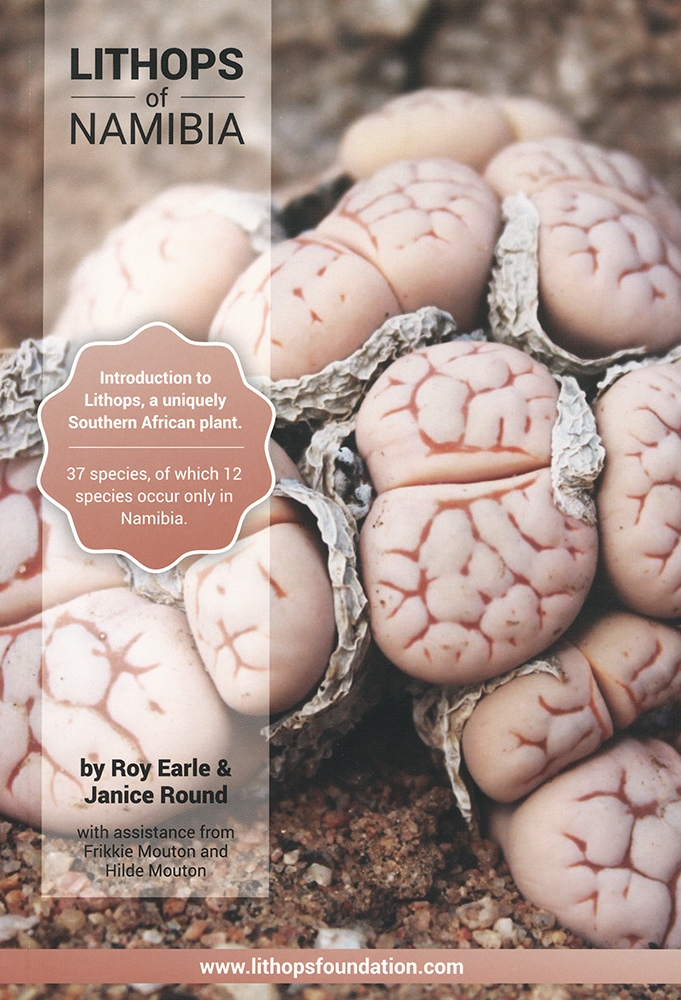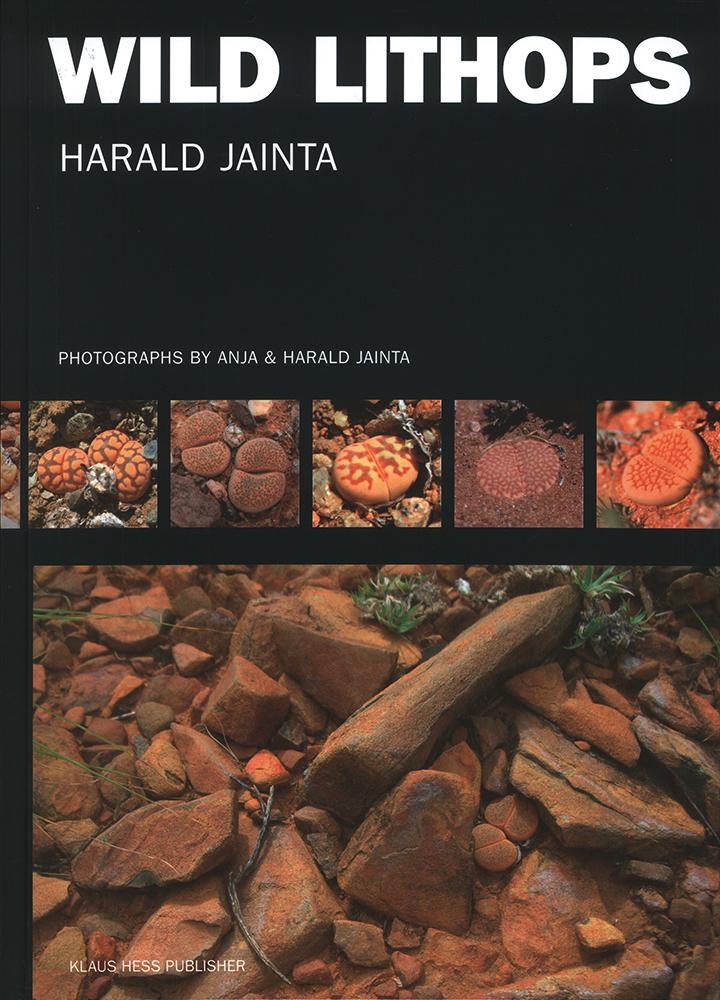Lithops of Namibia, by Roy Earle and Janice Round

Lithops of Namibia, by Roy Earle and Janice Round. Publisher: Alte Kalkofen Lodge. Keetmanshoop, Namibia
Lithops of Namibia, written by Roy Earle and Janice Round who were assisted by Frikkie and Hilde Mouton.
Lithops are uniquely Southern African plants occurring in the desert and semi-desert areas of western and southern Namibia and northern South Africa. There are 37 species, of which 12 species occur only in Namibia, four species inhabit suitable habitat in both Namibia and South Africa and 21 species only occur in South Africa. Several of the species are further scientifically classified into subspecies and varieties due to local variations in isolated populations. This publication will only deal with the 16 species that occur in their natural habitat within the political boundaries of Namibia. It does not include the cultivars of these species, mostly colour variations, that are only seen in cultivation. The most commonly used vernacular names for these plants are "flowering stones" or "living stones" whilst in the Afrikaans language they are mostly known as "beeskloutjies" (little hoofs of a cow).
1.1 The Lithops Life-Cycle
An adult Lithops plant consists of two opposite fleshy leaves fused together at the base which are referred to as the head of the plant with the surface area referred to as the face. In some Lithops species a single older plant can consist of several heads. At the end of the growing season, usually early winter, the Lithops plant will go into a "rest" period during which time the two leaves of each head will be reabsorbed over several months whilst two new leaves are formed at the base. These new leaves will grow to their full size after rain and the cycle is completed with the remnants of the old leaves being mere dried shells which can persist at the base of the plant for many years. The approximate age of a Lithops plant can often be determined by the number of persistent old leaf shells because one shell represents one year of life. During prolonged periods of drought the heads of each plant will shrink and the whole plant might be buried below the soil surface. After good rain the resting Lithops plants will absorb the water within days and break through the soil surface to swell out to their full potential and then grow for the remainder of the summer growing season until early winter comes again.
Lithops amicorum [Figures 4A & 4B]
History: This species was discovered in September 2003 by four Lithops enthusiasts, Frikkie Mouton, Hilde Mouton, Tok Schoeman and Denise Schoeman on a farm south of Bethanien. A second colony was found some months later on the same farm and these are the only two localities where this species is known to occur. The species was described three years later and named for the four friends; amicorum meaning friendship.
Distribution and Habitat: Only known to occur in two small colonies three kilometers apart south of Bethanien. Both colonies are on outbreaks of opaque white and yellow quartzite where the plants grow largely below the top surface of the angular coarse grit with a few black micaceous schist and dolerite stones.
Description: Most of the plants in habitat are small with elliptical heads and a smooth face surface. The two leaves of the individual heads are equal or slightly unequal in size. Habitat plants are mostly single or double-headed but three and four-headed plants are also seen. The faces of the plants are an opaque greyish-white with various amounts of slender lines, dots and dashes which are darker bluish or reddish-brown in colour. The flowers are white and about 25 mm in diameter.
This is an excerpt from Lithops of Namibia, by Roy Earle and Janice Round.
Title: Lithops of Namibia
Authors: Roy Earle; Janice Round
Publisher: Alte Kalkofen Lodge
ISBN: none
Keetmanshoop, Namibia (no date given)
Softcover, 15 x 21 cm, 51 pages, numerous colour images
Earle, Roy und Round, Janice im Namibiana-Buchangebot
Lithops of Namibia
Lithops of Namibia, also referring to the Lithops plant collection of the Alte Kalkofen Lodge.
Weitere Buchempfehlungen
Wild Lithops
Wild Lithops features all 91 known species in their natural surroundings from a perspective of a field research in Namibia and South Africa.


